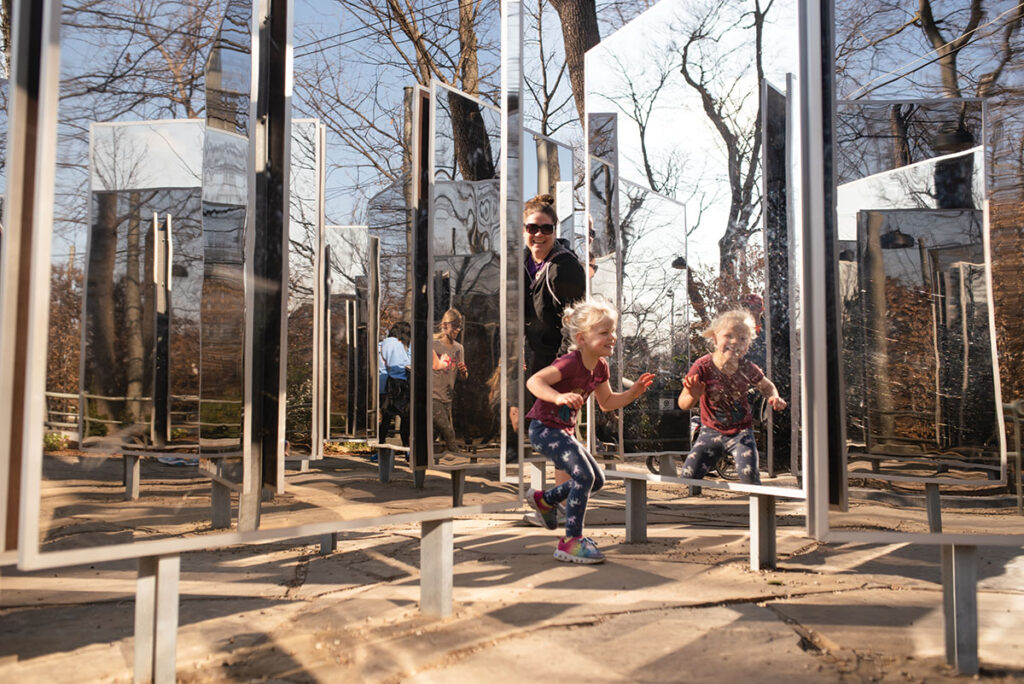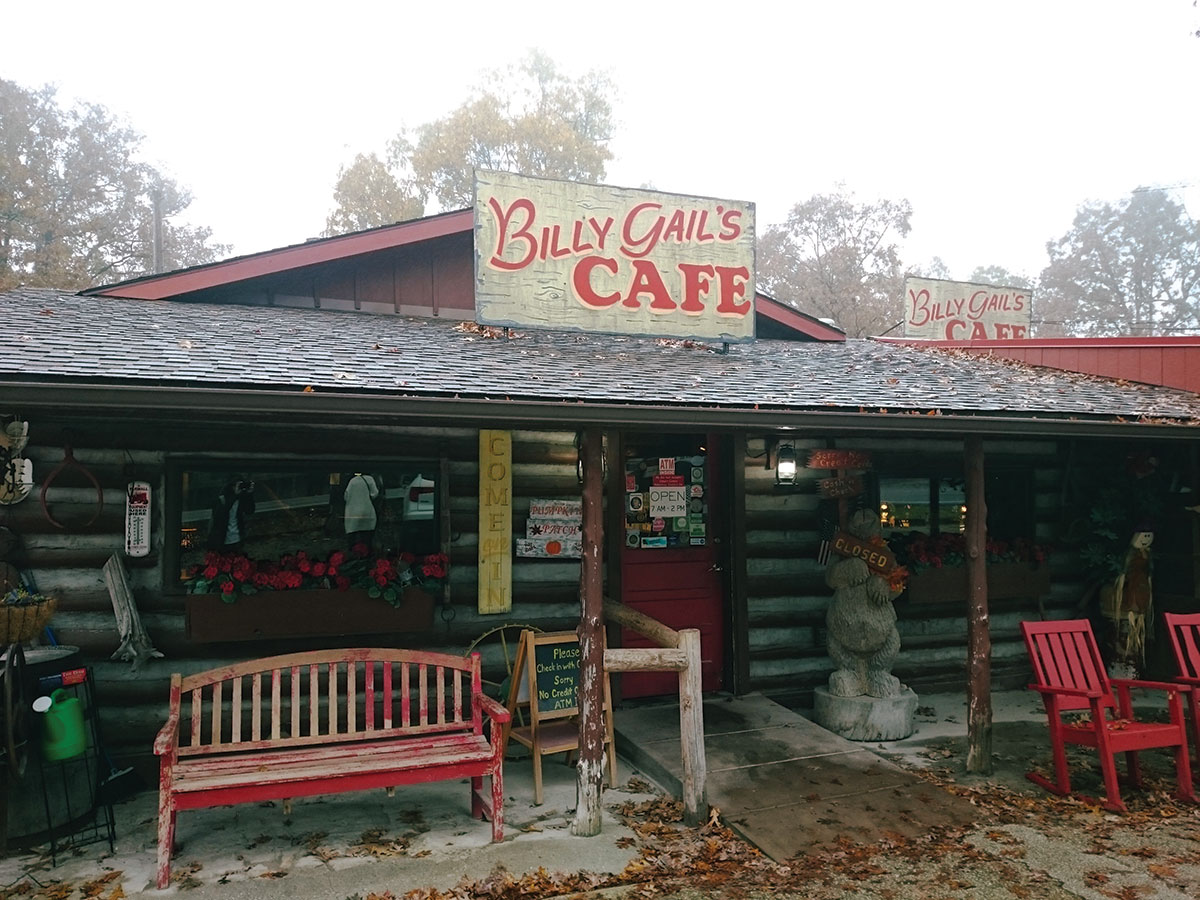
The Gathering Place is the largest private gift to a community park in U.S. History
TULSA, OKLA. – Tulsa’s Gathering Place is a nearly 100-acre park along the Arkansas River in Tulsa, Okla. The primary access to the park is South John William’s Way which is just south of 26th Place. The park joins the River Parks East Trail and has multiple access points, depending on what part of the park you want to visit. The park is free to the public.
The award-winning park opened in September 2018. National awards include USA Today’s Best City Park 2019 and Best New Attraction 2021, Time Magazine’s 100 Best Places to Visit 2019, Time Kid’s Magazine’s Worlds Coolest Places, and National Geographic’s 12 Mind-bending Playgrounds Around the World, among many other state and local awards. The Gathering Place has also been awarded multiple design, construction, engineering and environmental awards.
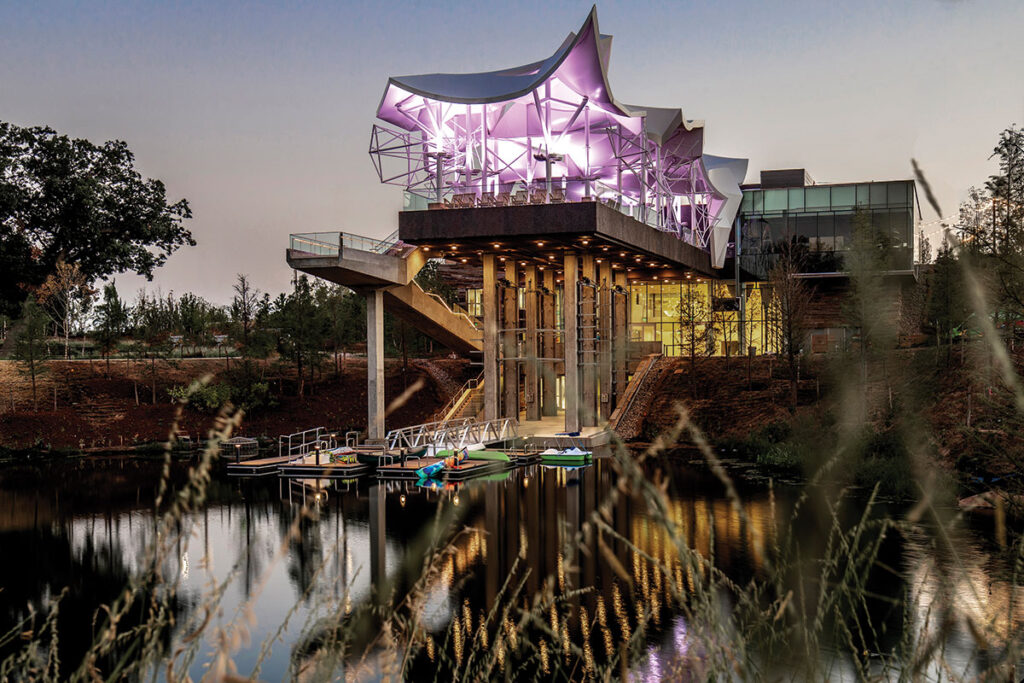
The George Kaiser Family Foundation took on enhancing the river parks area in Tulsa. The project broke ground in 2014 after years of planning.
“We are committed to creating a gathering space that is a recreational, civic and cultural destination for all walks of life to enjoy promoting inclusivity in our city. We are committed to enhancing the River Parks system while preserving the area’s natural ambiance and integrating the new space into the greater surrounding area,” the Gathering Place website states.
The Gathering Place was a $465-million project, making it the largest private gift to a community park in U.S. History. Donors are listed on the park’s website.
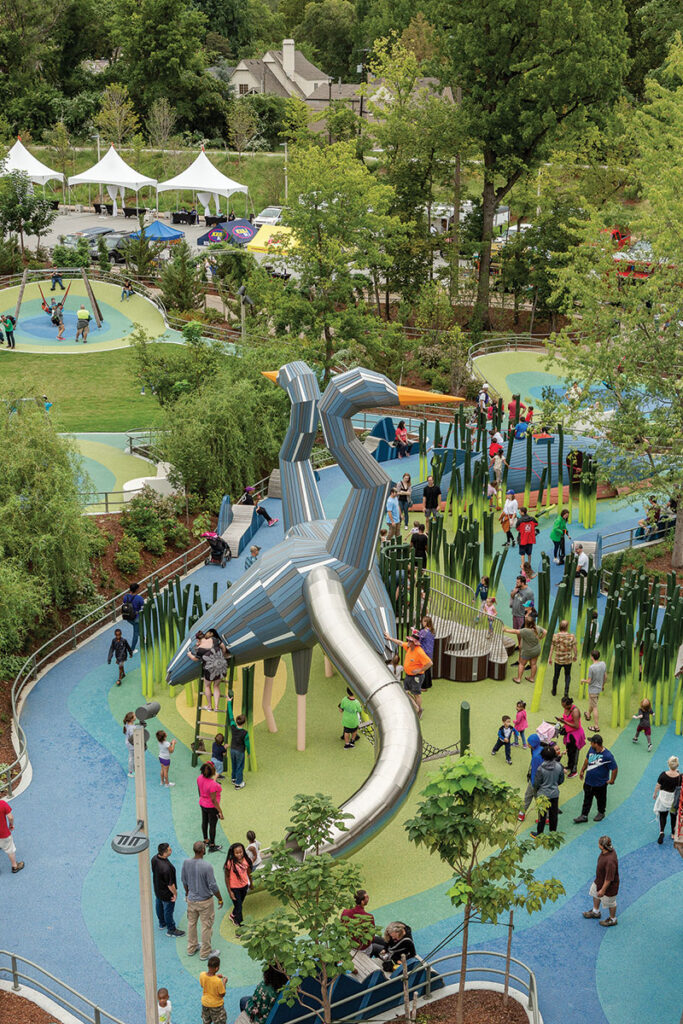
Michael Van Valkenburgh Associates, a world-renowned landscape architectural firm, was hired to design the park to be a nature-inspired retreat within the city of Tulsa. Eco-friendly strategy, natural symbiotic landscape design and sustainability are meant to enhance park experiences and provide an iconic space for social and program opportunities. Two 300-foot-long land bridges provide safe passage for guests and wildlife over Riverside Drive and connect the park to riverfront walking and bike trails.
Crossland Construction Company completed the park. The buildings in the park were designed by nationally and internationally known Mack Scogin Merrill Elam Architects.
The main entrance to the park is Williams Lodge. It features a welcome center, two large community spaces and the world’s largest limestone fireplace. The fireplace is a feature of the Gathering Room and Redbud Café on the lower level.
The ONEOK Boathouse has three levels and a variety of free programs and experiences, including the Cabinet of Wonder art installation, an activity space home to children’s events and learning activities. Kayak and pedal boat rentals are available at the boathouse. The one-of-a-kind roof design of the overlook deck provides both indoor and outdoor views of the horizon, offering a place to experience the sunset and ever-changing Tulsa skyline after a meal at the Vistas at the Boathouse Restaurant.
Three hundred trees were preserved during park construction, and 5,800 trees were planted, including 100 different species. Unhealthy trees were recycled into play features, tables and benches in the park. More than 16 acres of Oklahoma’s native tall grass and short grass meadows serve as a new habitat for local flora and fauna. The Lady Bird Johnson Wildflower Center in Austin, Texas, helped design the 16 acres of wildflowers in the park’s meadows. The park contains 1.2 million plants and shrubs.
The horticultural theme of the park is a mixture of ecological regions found in Oklahoma, including prairies, wetlands and forests. The park contains 19 soil types engineered for the 400 species of plants in the park.
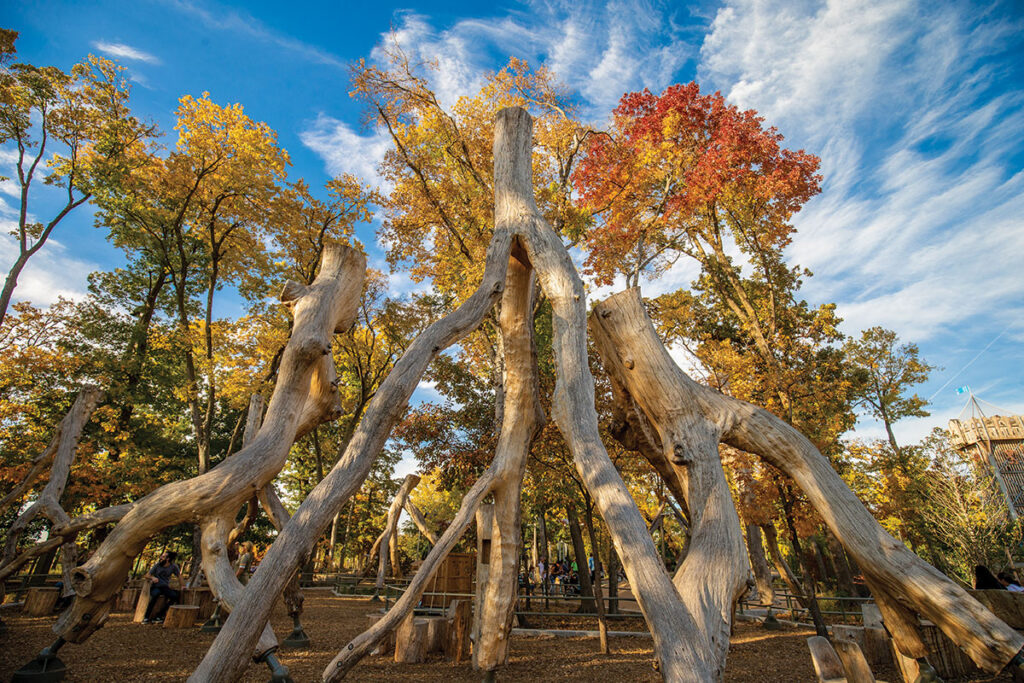
Sustainable practices were deliberately incorporated into park operations. An entirely automated LED lighting system with a central control panel ensures energy is used efficiently for the park.
Sustainable water management practices circulate the pond’s nearly six million gallons of water through the adjacent wetlands conserving water and cleansing it, eliminating the need for chemical treatment. Several large parking lots have underground infiltration basins, which help to filter out pollutants.
A series of exposed wetland infiltration gardens on the south side of the skate park absorb roadway runoff from Riverside Drive and the park uplands.
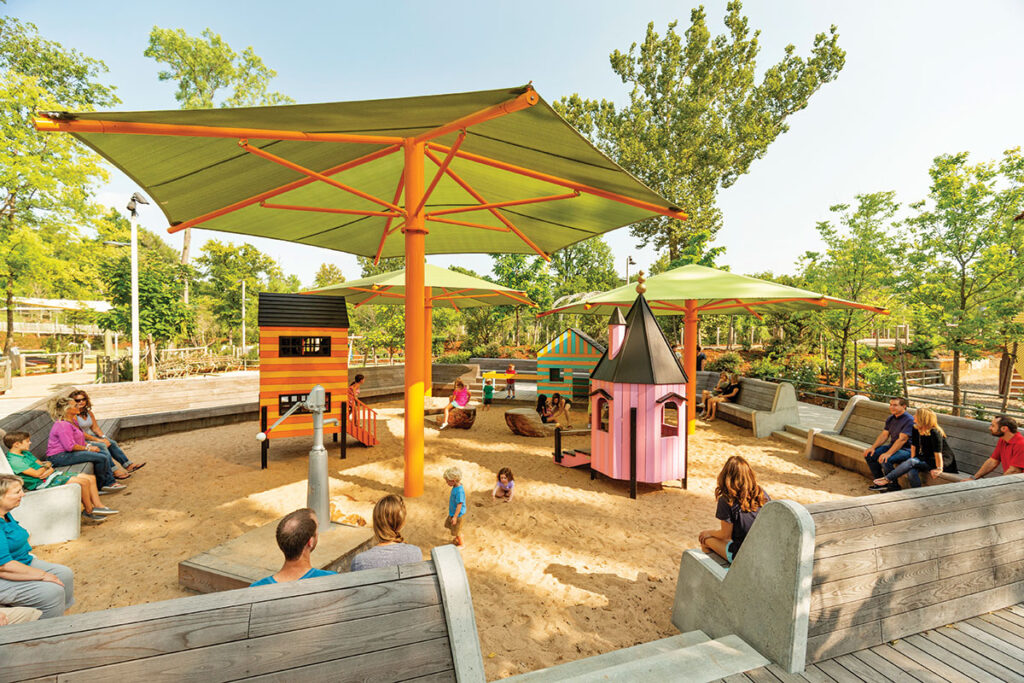
Wildhorse sandstone, native to McClure, Okla., is used extensively in the park. Thermally processed ash and pine were used for benches, decking and light poles.
Abundantly available larch and black locust were used for play structures. The park maintenance facility is largely underground, which not only reduces its visibility but also helps to naturally insulate the building and reduce demand for heating and cooling. All of the Gathering Place buildings, including the maintenance facility, are sustainably heated and cooled through geothermal wells.
The Gathering Place has more than 100 unique experiences. Art is sprinkled throughout the park. Attractions include the Chapman Adventure Playground, William’s Lodge, ONEOK Boathouse, Mist Mountain, Charlie’s Water Mountain, Quick Trip Great Lawn, Energy Transfer Sports Center, Skate Park and BMX Pump Track, Midland Valley Trail, Four Season’s Garden, Slide Vale, Swing Hill, Peggy’s Pond, Wetlands Gardens, Garden Path Bridge, Sky Garden, Willow Beach, Nature Trail, Pine Valley, and the newly opened Discovery Lab non-profit children’s museum.
